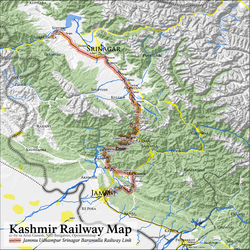
The railway stations in Jammu and Kashmir belongs to Jammu Division of Northern Railway Zone of Indian Railways. The list of railway stations in Jammu and Kashmir can be divided into 2 parts: [1]
Contents
- Railway stations in Jammu Region
- Railway stations in Kashmir Region